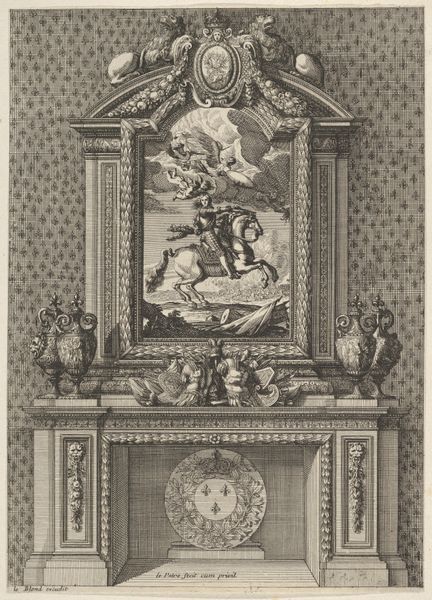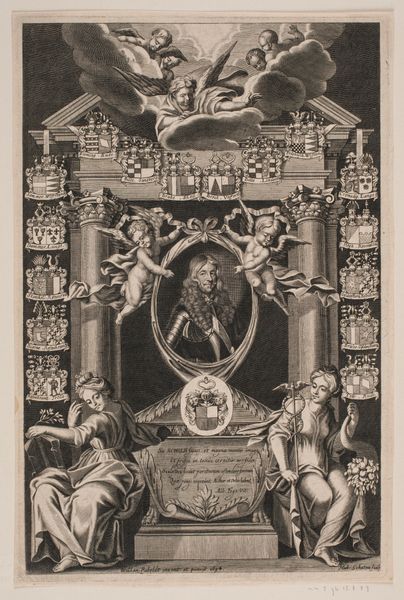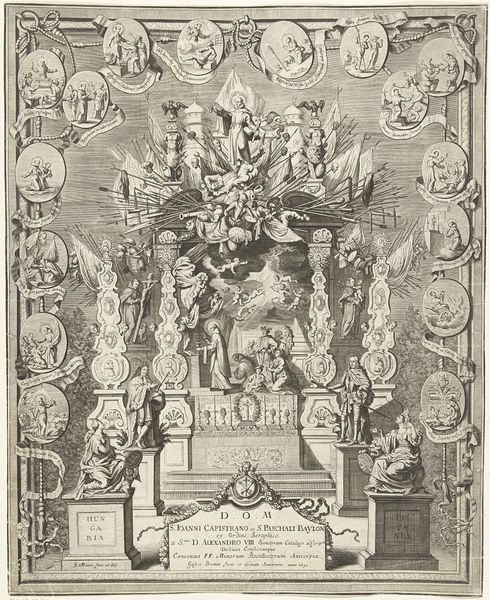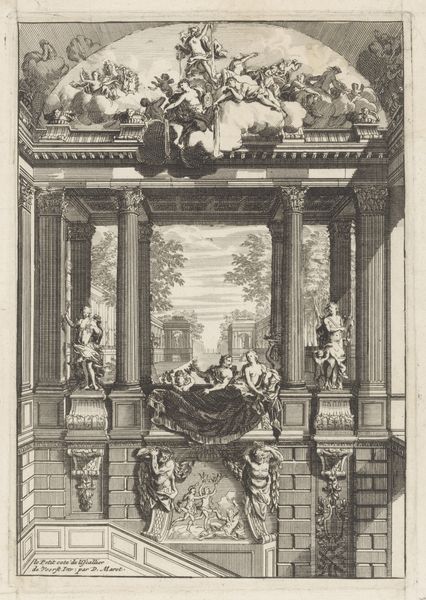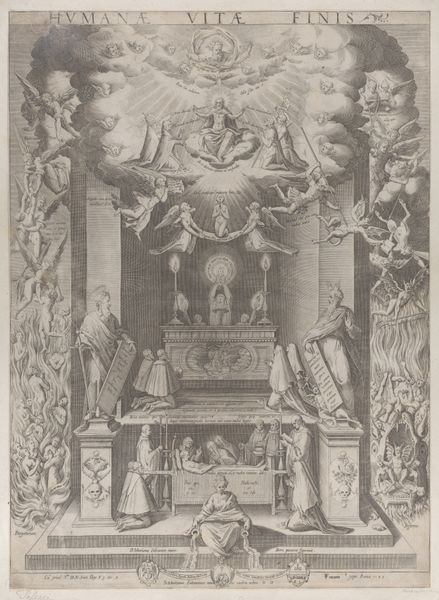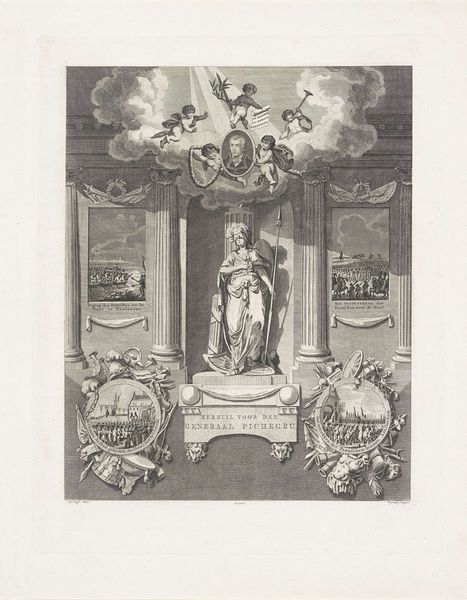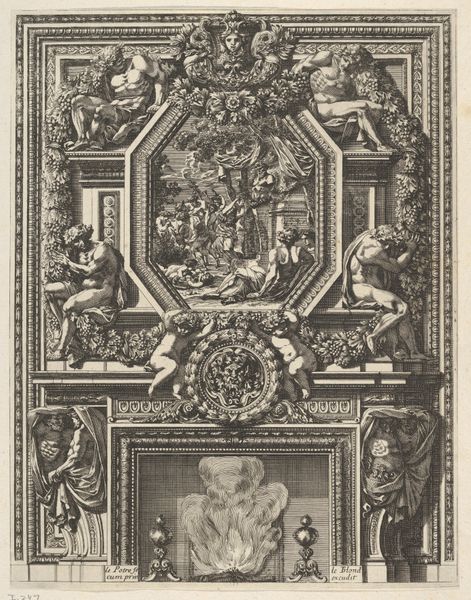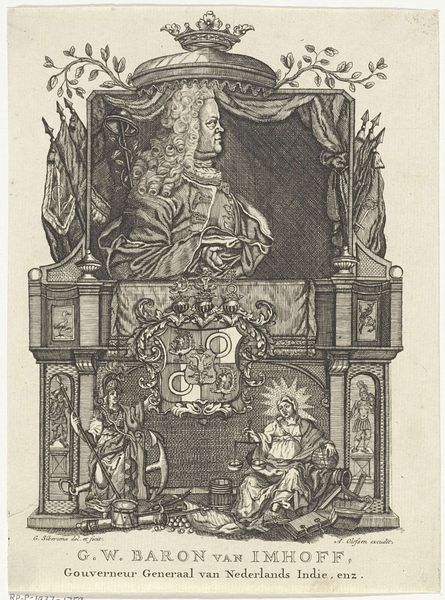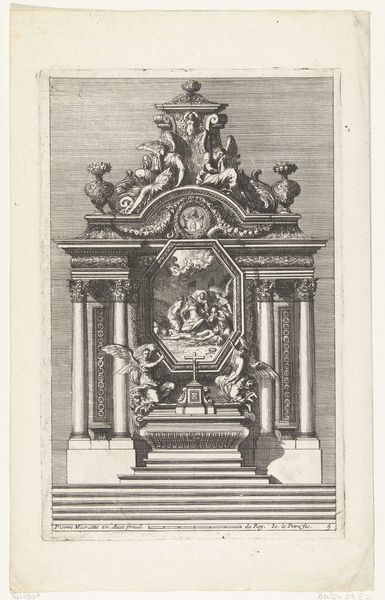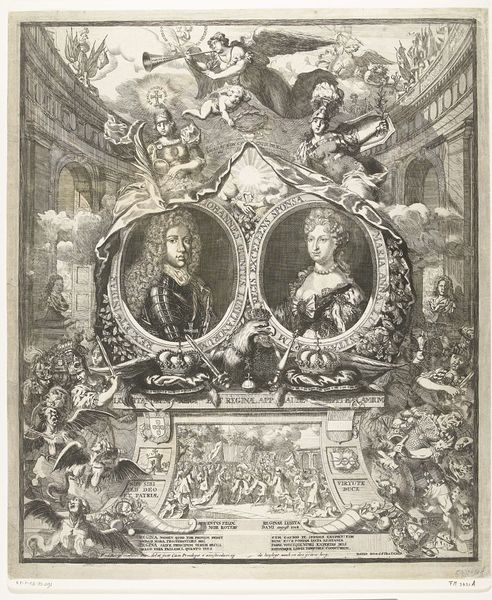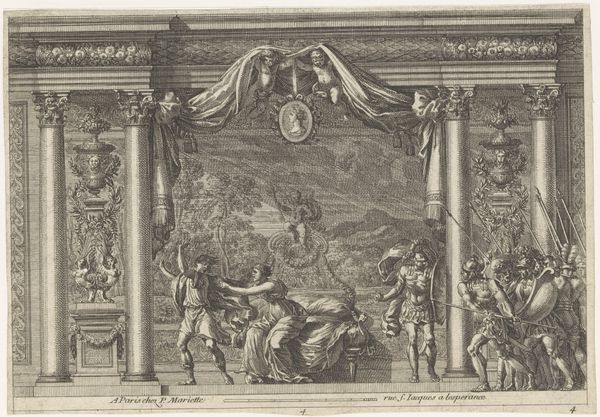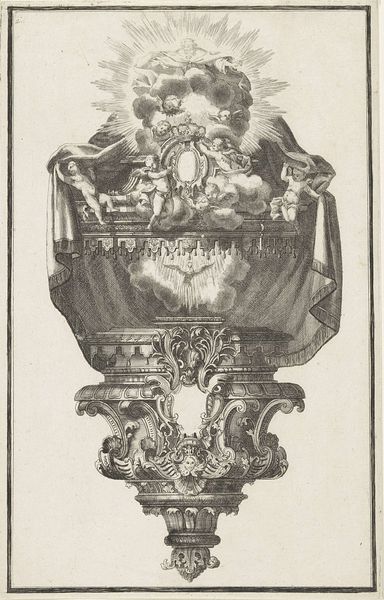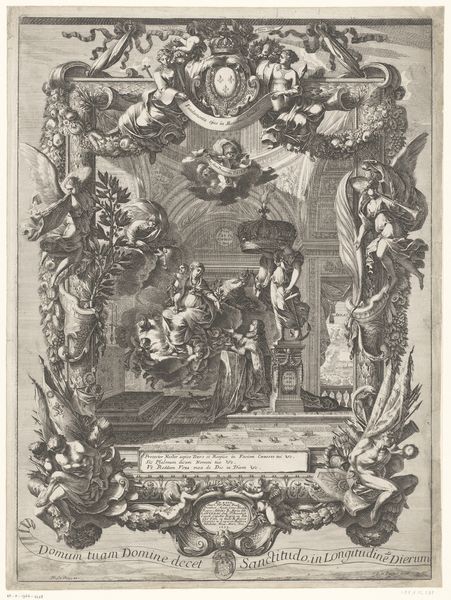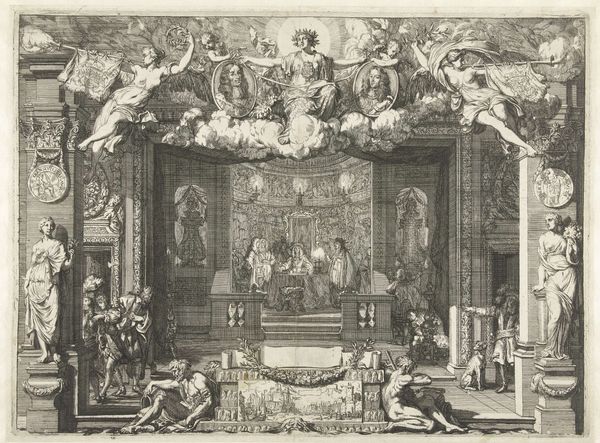
print, engraving, architecture
#
allegory
#
baroque
# print
#
history-painting
#
engraving
#
architecture
Dimensions: height 345 mm, width 246 mm
Copyright: Rijks Museum: Open Domain
Editor: Here we have Johannes Valdor’s "Monument voor Lodewijk XIII, koning van Frankrijk," a print made with engraving between 1626 and 1670. It has such a formal feeling, grand and constructed, and so allegorical. How do you interpret this monument, looking at it through a contemporary lens? Curator: Well, immediately I’m struck by how power is being constructed here. The print presents a visually overwhelming monument, designed not just to commemorate Louis XIII but to actively manufacture his image. Look at the theatricality of the Baroque style, meant to instill awe. Consider, who is this monument really for? And whose stories are erased in this glorification of a monarch? Editor: It's interesting you point that out because there are the figures of, presumably, deities and cherubs but I hadn't considered who was being erased! Who might have commissioned such an obviously flattering depiction? Curator: That's key, isn't it? This was likely commissioned by the court itself, a concentrated effort to solidify Louis XIII's authority and perpetuate a specific narrative about his reign. We must interrogate the power dynamics at play. How does this image contribute to a potentially misleading or incomplete history? Editor: I see your point. It is interesting to consider who is behind the creation of this art, it feels like propaganda more than an artwork! Are the cherubs more symbolic of... angels? Curator: Symbols have power, precisely. Consider how they construct a divine right to rule. By surrounding Louis XIII with angels, it's almost like an alignment with moral authority that inherently excludes those marginalized under his reign. We need to continually ask whose stories are being deliberately omitted from this visual rhetoric? Editor: It definitely gives me something to think about: power and authority are not just to be accepted! Thanks for sharing this insightful interpretation! Curator: It goes to show how much even old art impacts us today. Examining images like this equips us to see how visual media continues to be employed in political, racial, and gendered constructs of our own time!
Comments
No comments
Be the first to comment and join the conversation on the ultimate creative platform.
